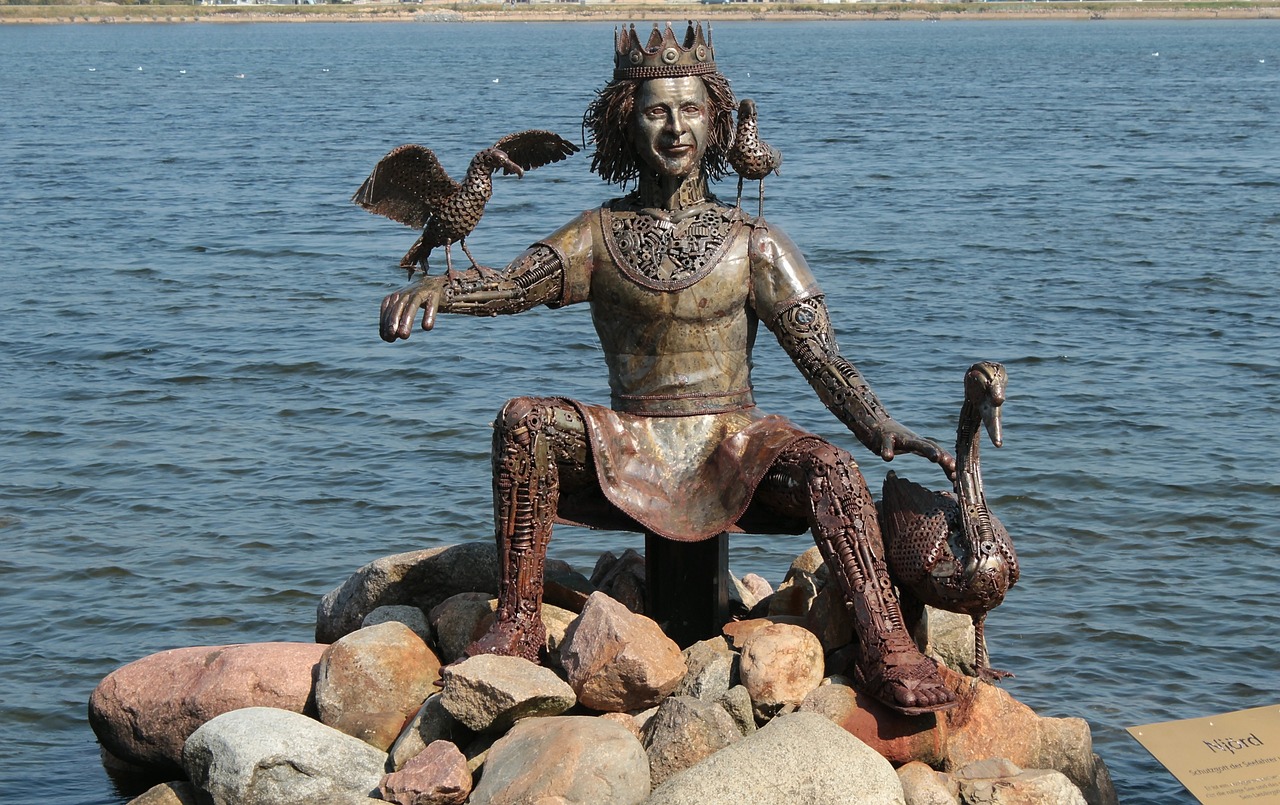The Multifaceted Nature of Horus in Ancient Egyptian Mythology
Horus, an esteemed sky god in ancient Egyptian mythology, primarily represents two gods: Horus the Elder, the last of the original five deities, and Horus the Younger, the offspring of Osiris and Isis. As historian Jimmy Dunn observes, Horus is the most significant of the avian deities, portrayed in diverse ways across numerous inscriptions, making it challenging to ascertain a singular “true” Horus. In many contexts, ‘Horus’ refers either to the elder god or to the younger god who overcame his uncle Set and reinstated balance in Egypt.
The name Horus, derived from the Latin term, translates from the Egyptian “Hor,” meaning “the Distant One,” denoting his role as a god of the heavens. The elder Horus, associated with the creation of the world, goes by several names, including Harwer and Haroeris in Egyptian texts. Conversely, Horus the Younger, known as Horus the Child (Hor pa khered), was later identified with Harpocrates by the Greeks after their conquest of Egypt in 331 BCE. Unlike the Egyptian Horus, Harpocrates symbolizes silence and secrecy, typically depicted as a winged child.
The Elder Horus
Considered one of the oldest Egyptian gods, the elder Horus, born from the cosmic unions of Geb (the earth) and Nut (the sky), is often tasked with overseeing the sun. His relationship with other deities varies across stories; sometimes, Hathor is depicted as his mother or wife. Scholar Geraldine Pinch mentions one of the earliest representations of Horus as a falcon piloting a barque through the sky, solidifying his image as both a creator and protector.
Egyptian folklore is populated with various falcon gods, termed Avian Deities; they eventually merged into the figure of Horus. Though some, like Dunanwi, can be traced back to earlier eras, the full characterization of Horus likely emerged during Egypt’s nascent religious era. Egyptologist Richard H. Wilkinson asserts that Horus’s identity is documented from the dawn of the Dynastic Period. Even during the Predynastic Period (around 6000-3150 BCE), rulers identified as “Followers of Horus,” highlighting the deep-rooted respect for this deity.
As the “Distant One,” Horus shares a functional role with Hathor, symbolizing transformation through his celestial movements. The sun and moon represent his eyes, overseeing the world and intervening in times of turmoil. As a falcon, he not only communicates with Ra but also brings solace to the troubled.
From the Early Dynastic Period onward, Horus became associated with the Egyptian monarchy, though later rulers favored the younger aspect of the deity. Historian Margaret Bunson notes that the Serekh, the king’s early emblem, prominently featured a falcon, underscoring Horus’s significance in royal symbolism and local variations in worship.
Horus the Younger and the Osiris Tale
The younger Horus is often seen as a descendant of the elder but has eclipsed him within mythology. By the time of the Ptolemaic Dynasty (323-30 BCE), the representation of Horus the Child—often depicted as a boy with a finger to his lips—became prevalent. His character symbolizes divine promises of protection for vulnerable humanity, stemming from his own trials.
Horus’s saga is deeply intertwined with the Osiris Myth, which narrates how Osiris and Isis ruled a paradise. The envy of their brother Set drove him to plot against Osiris, resulting in a series of cataclysmic events. After Osiris’s demise—tricked into a coffin and tossed into the Nile—Isis embarked on a relentless quest to revive him. Eventually, through her efforts and magical prowess, Osiris was revived but bound to the underworld. As Osiris entered the afterlife, Isis transformed into a kite and conceived Horus, who would rise to reclaim his father’s throne.
Isis’s arduous journey as a mother led her to protect Horus from Set’s malevolence, ensuring her son was trained to reclaim his heritage. The narrative of Horus’s conflict with Set spans numerous versions, notably depicted in “The Contendings of Horus and Set,” where a tribunal of deities adjudicates their struggle for power.
The Battle for the Throne
Horus’s competition for the throne culminated in numerous trials. Despite setbacks, Horus remained steadfast, ultimately seeking justice for Osiris and reclaiming the throne. Isis, in her desperation, ingeniously outwitted Set, leading to Horus’s ascension as the rightful ruler of Egypt, symbolizing the restoration of order.
Horus’s successes in the celestial and earthly realms further cemented his status as the Uniter of the Two Lands, a guardian of Egypt’s unity, and a mediator for its rulers. As the embodiment of divine kingship, Horus’s influence permeated all levels of Egyptian culture, as seen in the alignment of pharaohs with his identity.
The Worship of Horus
Devotees honored Horus in temples filled with grand imagery and fledgling rituals tailored to his worship. His clergy mainly consisted of male priests who fostered the connection with Isis, the protective mother figure. Residents flocked to these temples for consultations on various aspects of life, underscoring Horus’s vital role as a source of guidance, healing, and the promise of continual protection.
Horus is also associated with the Four Sons—protectors of vital organs—assuredly preserving the deceased into the afterlife. Each son represented cardinal directions and unique aspects of the human body, ensuring Horus’s watchful eyes remained vigilant both in life and beyond.
The Controversy Surrounding Horus
As belief in Horus thrived, so too did its narratives influence other religions, especially as the cult of Isis gained momentum in Greece and Rome, serving as a forerunner to early Christianity. Claims of remarkable parallels between Horus and Jesus surfaced, spurring a debate within religious circles but often relying on exaggerated or erroneous comparisons lacking historical credence. Contradictory assertions regarding births, baptism, and resurrection further diluted the integrity of these discussions.
Ultimately, while Horus served as a pivotal figure in ancient Egyptian faith, portraying themes of protection and the eternal cycle of life, the distinctions between him and later religious figures are essential for a nuanced understanding of these interconnected mythologies.



